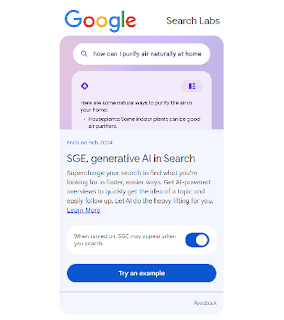AI Journalism: The Pros, Cons, and Future of Automated News
AI journalism has the potential to revolutionize the way news is produced and consumed, with benefits such as increased efficiency and personalized content. However, there are also concerns about the reliability and bias of AI-generated news, as well as the potential loss of jobs for human journalists. The future of AI journalism will likely involve a balance between automated and human-driven news production, with a focus on ethical and unbiased reporting.
The world
of journalism has undergone a rapid transformation in recent years due to the
rise of artificial intelligence (AI) and its increasing use in news production.
AI
journalism involves the use of machine learning algorithms and natural language processing to create news content without human intervention.
While this
technology offers several benefits, it also raises concerns about the quality,
credibility, and ethics of automated news.
This
article will explore the pros, cons, and future of AI journalism.
What is AI Journalism?
AI
journalism refers to the use of AI technologies such as machine learning
algorithms and natural language processing to automate the news production
process.
This
includes generating news articles, summarizing news stories, and creating
social media posts.
AI
journalism also involves the use of chatbots and virtual assistants to interact
with readers and answer their queries.
Advantages of AI
Journalism
Speed
and Efficiency: AI
journalism can quickly generate news content and distribute it to a global audience,
thereby reducing the time and resources required for news production.
Cost-effective: Automated news production can
significantly reduce the cost of hiring journalists and other staff, making
news production more affordable for small news organizations.
Consistency
and Accuracy:
AI-powered news content is less prone to errors and bias, ensuring that readers
receive accurate and consistent information.
Disadvantages of AI
Journalism
Lack of
Creativity and Context:
Automated news production lacks the creativity and context that human
journalists bring to their work, leading to generic and uninspired news
articles.
Quality
and Credibility:
AI-generated news articles may lack the quality and credibility that human
journalists provide, leading to inaccuracies, biases, and misinformation.
Job
Losses: The
widespread use of AI journalism may result in job losses for journalists,
editors, and other staff, leading to a potential loss of expertise and
diversity in newsrooms.
Ethics of AI Journalism
Bias
and Fairness: AI
algorithms can perpetuate biases and inequalities if not designed and trained
carefully. It is important to ensure that AI systems are transparent,
accountable, and fair in their news production.
Privacy
and Security: The
use of AI-powered chatbots and virtual assistants to interact with readers
raises concerns about privacy and security. It is essential to ensure that
readers' personal information is protected and not misused.
Accountability: As AI systems become more
prevalent in news production, it is important to ensure that they are held
accountable for the content they produce, and that there is a mechanism in
place for correcting errors and misinformation.
Future of AI Journalism
The future
of AI journalism is likely to involve a combination of human and machine
inputs, with journalists using AI technologies to assist them in their work.
This
hybrid approach is expected to enhance the quality and diversity of news
content while reducing the time and cost of news production.
The use of
AI journalism is also expected to expand to other areas, such as personalized
news delivery and automated fact-checking.
Conclusion:
AIjournalism offers several benefits, including speed, efficiency, and accuracy.
However, it also raises concerns about the quality, credibility, and ethics of
automated news.
As AI
systems become more prevalent in news production, it is important to ensure
that they are transparent, accountable, and fair in their news production.
The future
of AI journalism is likely to involve a hybrid approach that combines human and
machine inputs, leading to enhanced news content while reducing the time and
cost of news production.




Comments
Post a Comment